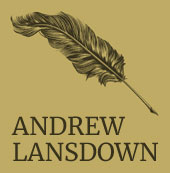Review of The Chronicles of Klarin
 Andrews fantasy trilogy, The Chronicles of Klarin, was reviewed by Ian Keast in Studio magazine, Number 148, 2020. The review begins:
Andrews fantasy trilogy, The Chronicles of Klarin, was reviewed by Ian Keast in Studio magazine, Number 148, 2020. The review begins:
One of my earliest memories of childhood is my father reading The Lion, the Witch and The Wardrobe by C.S. Lewis to me. Favourite sections were read, again and again. So began a lifelong interest in the genre of fantasy.
Andrew Lansdown is a familiar name to Studio readers. We associate him as the poet whose writing has graced the pages of this journal for many years. What is not as well known is that he has written three fantasy novels: With My Knife (1992); Dragonfox (1997); The Red Dragon (2006); and now they have been republished in this trilogy, The Chronicles of Klarin. Having read them as separate novels when they were published, it is a great pleasure to re-read the trilogy. Like all worthwhile fantasy, they offer much from re-reading their rich imaginative worlds.
In 2001, Lansdown published an essay, In Defence of Fantasy. As the title suggests, he wanted to present a lucid defence of the integrity of the genre. After all, as he states, it has seen notable practitioners—C. S. Lewis, J. R. R. Tolkien and George MacDonald—to name a few. Fantasy is defined as, extraordinary and remarkable. Fantasy stories go beyond everyday realities and may often transcend the laws of nature. They portray things that do not normally happen and worlds that do not actually exist … It is the unexplained, unembarrassed presentation of the extraordinary that separates fantasy from all other types of literature … Yet while fantasy writing depicts the extraordinary, it also celebrates much that is ordinary: trees, stones, horses, hearth-fires, bread—all somehow become solid and important in fantasy writing …
This quotation serves to introduce us to The Chronicles of Klarin. There the “extraordinary” and “remarkable” abound—dragons, other worlds, dragonettes, foxes and the like, appear across the pages. The “ordinary”, both in setting and many of the characters is alongside. And this mix is driven along by a strong, taut, and thoughtful narrative. …
Continue reading Ian Keast’s review here.



